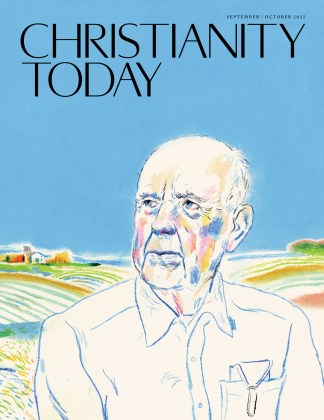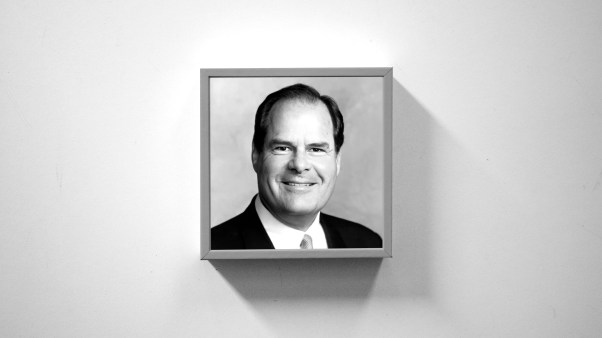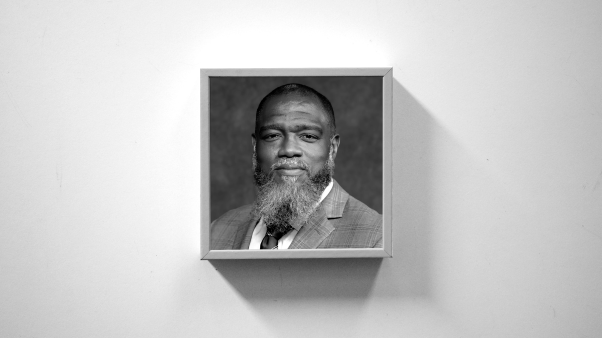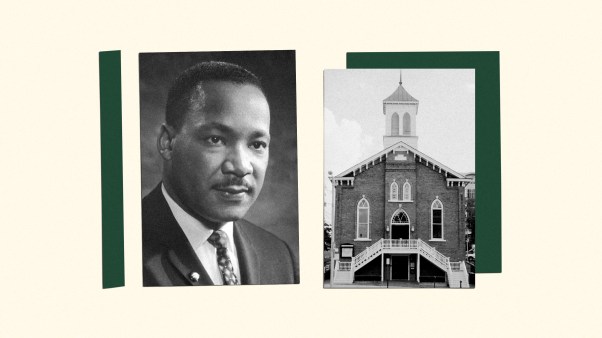A number of you wrote in to critique my recent newsletter “The Roots of Pentecostal Scandal: Romanticism Gone to Seed” on various grounds—including my supposed lack of salvation, my supposed hatred of Pentecostals, and my lack of solid evidence to back up the claim that the intensively “vertical” piety of Pentecostals and their holiness forebears has sometimes been indulged at the expense of “horizontal,” human relationships.
Since there is no sure way that I know of to prove one’s salvation, I’ll move on briefly to the question of my views on Pentecostalism, before offering some more of that historical evidence many of you were looking for.
I want to be clear: I am not arguing that the vibrant, physical, emotional worship of God typical of the holiness and Pentecostal movements is intrinsically a bad thing. I do not happen to think it is. In fact, I have grown a great deal as a Christian through such worship. Holiness and Pentecostal folk really have recaptured a way of communing with God that engages human worshipers as embodied, emotional, related creatures. And this can be a very good thing.
But like any recovery of truth in the church, the holiness—and later, Pentecostal—rediscovery of direct, intensive intimacy with Christ has had its rough edges and its misguided excesses. That’s the way it is with all Christian movements—we all pick up alloys and emphases from our surrounding cultures. To remind ourselves of this fact is not to categorically reject any Christian group. It is to see the church whole—in the troubling mixture of sanctity and sinfulness that marks all human attempts to live faithfully for God.
On, then, to some further historical background. Since my argument starts with Pentecostalism’s parent—the Victorian holiness movement—I turn to the writings of that movement.
Initially, holiness writers were as likely as any evangelicals to extol the virtues of hearth and home as the best, holiest place for spiritual nurture and emotional fulfillment. So a writer in the Advocate of Christian Holiness, January 1873, enjoined his readers to “see to it that son and daughter never pass the home-portals without feeling that they enter into a charmed circle, that they breathe an atmosphere of purity and love.”
But evidence crops up early in the movement’s literature that members could be tempted by the joys of worship and the excitement of religious activism to neglect their more difficult, prosaic duties to their blood families. As I’ve argued, this anti-domestic trend seems to have emerged out of the romantic insistence that all one’s expectations for emotional fulfillment be concentrated on Jesus.
We gain a hint of this problem in an article titled “Holiness in the Family” that appeared in the same magazine—Advocate of Christian Holiness—in the same year, 1873.
“The family,” holiness Methodist pastor and evangelist Lucius C. Matlack felt constrained to remind his readers, “exists by divine appointment.” It “should not be deprecated” (someone, clearly, was deprecating it!). Matlack observed that in the joyous communal environment of camp meetings and prayer meetings, the sanctified reveled in “the experience of holiness” that “removes the distance between God and the soul.” There, in that sweet heaven-on-earth, “the presence of others, the melody of song, the power of united faith, combine to inspire boldness of confession, faithfulness in labor, and joy in the Holy Ghost.”
So far, so good. However, “when these scenes pass away” and the worshiper returns home, “too often professors of holiness seem to be ‘off guard’ … greatly to their damage and greatly to the scandal of their profession.” It was as if home was not the “natural element” of the charged-up holiness believer.
By 1880, scant decades before Pentecostalism emerged out of the holiness movement, the problem of hyper-verticality had not gone away. In an article that year titled “Religious Restlessness,” the influential holiness editor George Hughes admonished:
“When the Spirit fills us with inexpressible liberty … we hardly know how to contain ourselves; we can hardly attend to ordinary duties; we want to be preaching, teaching, witnessing, running through the land in an unearthly ecstasy, blazing the story of full salvation. But it is impracticable to do this. We are hedged about by an imperial fence of Divine providences; home duties and daily toils must be recognized. Now in such cases it requires great grace to hold ourselves in and not let this surcharge of fire tear our nerves to pieces.”
Hughes agreed with Matlack’s previous assessment that back home, in the more burdensome atmosphere of “duties, responsibilities, trials, and care,” too many saints were guilty of “wilful neglects of duty.” The family, Matlack had concluded, was “a severer school of training than is anywhere else to be found,” and many holiness believers were flunking out of it—failing to manifest the sanctified love that had seemed to flow so naturally in the supportive community of the holiness worship service.
This struggle with family ties and family affections had deep roots in the holiness movement. An early instance relates to an event in the life of Phoebe Palmer, narrated in our Issue 82: Phoebe Palmer and the Holiness Movement. On July 29, 1839, Palmer—a key early figure in the movement—wrote, “Through a distressing casualty, our darling youngest born has suddenly been translated from earth to heaven.” The casualty was a crib-fire. Palmer had rushed to the scene moments after the crib’s gauze curtains had caught alight, and “grasped my darling from the flames. She darted one inexpressible look of amazement and pity, on her agonized mother, and then closed her eyes forever,” leaving Palmer to make sense of the tragedy.
The way Palmer did make sense of the event echoes through the annals of the movement she helped found. She concluded that a mother could love a child too much—the child could become, in effect, an idol in the mother’s life. To become freed from this idol was to be freed to serve Christ. So it was that after her daughter’s death, Palmer claimed: “Never before have I felt such a deadness to the world, and my affections so fixed on things above. God takes our treasures to heaven that our hearts may be there also.”
Typically, this shift heavenward in her affections led Palmer to resolve that the time she would have spent rearing her child would now be dedicated to “work for Jesus.” Perhaps, she mused, the fruit of her new evangelistic resolve could explain her tragedy. If by this circumstance she could now become “diligent and self-sacrificing in carrying out my resolve,” she comforted herself, “the death of this child may result in the spiritual life of many.”
This evangelical alchemy of domestic affection into pure love towards God showed up again and again in the testimonies of holiness believers. Typically the believer, during the struggle for entire sanctification, was brought face-to-face with the idolatry of his or her human loves. In a crisis moment, the struggling Christian faced the sort of challenge Abraham faced when God instructed him to sacrifice Isaac. It was a challenge to place God first by accepting his will for family members—spouses, children, or parents—even should that will be the loved one’s death. Only after accepting this could the believer “break through” and receive the joy of the sanctified—uninterrupted communion with Jesus.
Typical was the published remembrance of one holiness man who had “gained the victory” while walking home from a midnight prayer meeting. As he came into sight of his house, he thought of his wife. “The thought came to me would you be willing to give her up if it was the Lord’s will? I thought for a moment. It came to me the Lord has all power and could take her; why [should I not] be willing? I said thy will be done.” Thus was the “last idol of his heart” purged. Immediately he could look forward to entering the joy of the sanctified life: “I never was so completely prepared to have and enjoy life before.”
Similarly, a “Mrs. Whittemore” related the following experience in Phoebe Palmer’s magazine, Guide to Holiness, exactly fifty years after Palmer wrote in her diary about her struggles over the fiery death of her infant daughter. Recounted Mrs. Whittemore, “My husband was very, very ill, and it was long before I could be brought to say, ‘Thy will be done.’ When at last I yielded wholly, there was an immediate change, and very soon the sick one was well. Then my boy was brought to death’s door, and his case was pronounced absolutely hopeless. Still my heart was not willing to surrender all to Him. At last I bowed again at His feet and said, sincerely, ‘Thy will be done.’ That very day my sick boy sat up in his bed. … May God keep us ever low at His feet, and reconciled to His will in all things.”
In most cases, as with Mrs. Whittemore, once the crisis had passed, the saint was reunited (with affections chastened) to the loved one in question, recapitulating the ending of the Abraham-Isaac story. Nonetheless, the “either/or” quality of these testimonial accounts, which also permeates holiness hymns, carried a distinctly anti-domestic message. This language demanded that the believer not only remove his or her strongest affections from those other than God, but that he or she seek emotional support from none but God.
As the holiness believers of the 19th century met for glorious, intimate worship in their camp meetings and prayer meetings, they found themselves able to reconnect with God in affirmatively emotional and embodied ways long lost to much of the Protestant West.
But as they rediscovered the Christian tradition of a “religion of the heart,” Victorian holiness believers also fostered a radically exclusive emotional focus on a single, divine relationship that has caused problems for their Pentecostal (and indeed charismatic) heirs.
Again, this is a matter of cultural bias. Holiness folk absorbed this romantic emphasis from a Victorian cultural assumption: The Victorian period’s “cult of romantic love”—still celebrated in countless modern popular songs and movies—insisted that all our needs will be met in that one, perfect relationship.
And that just isn’t so.
It’s not the way God made us.
Copyright © 2004 Christianity Today.Click for reprint information.








